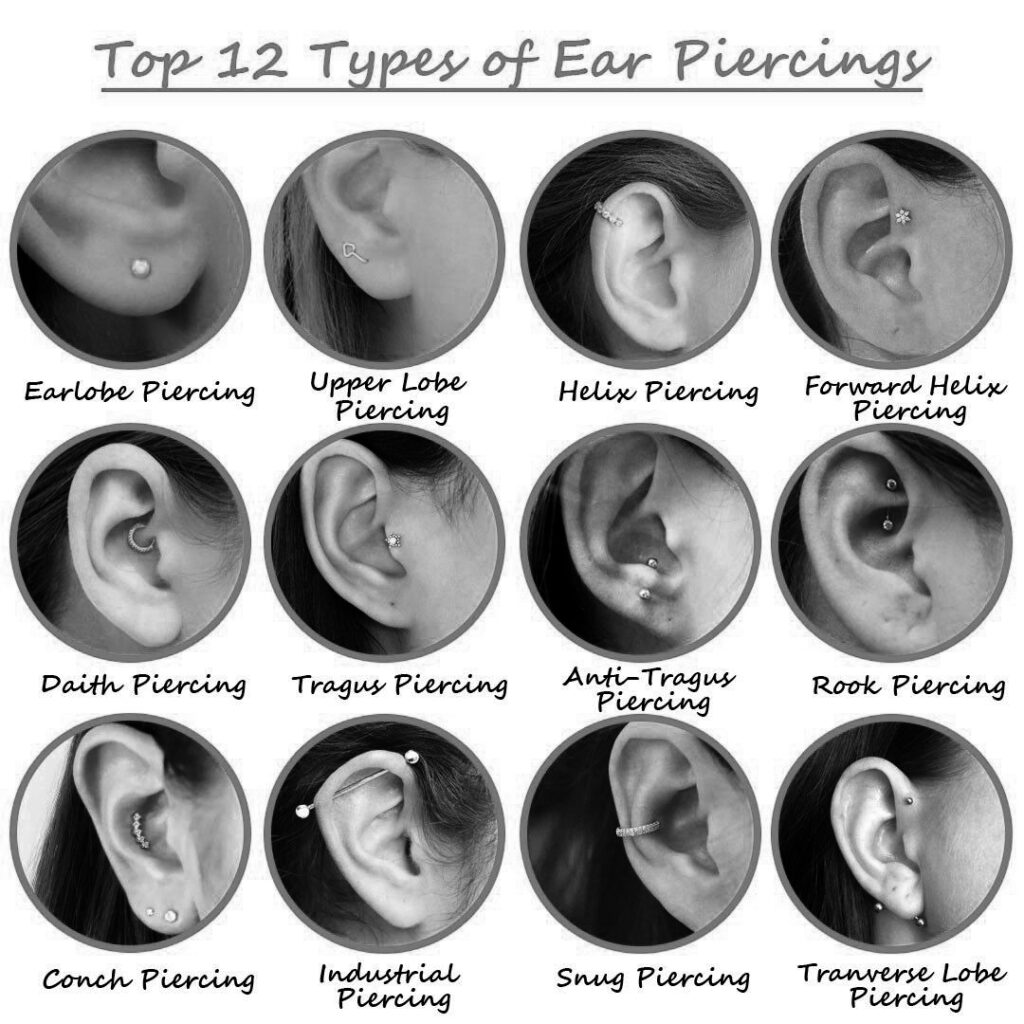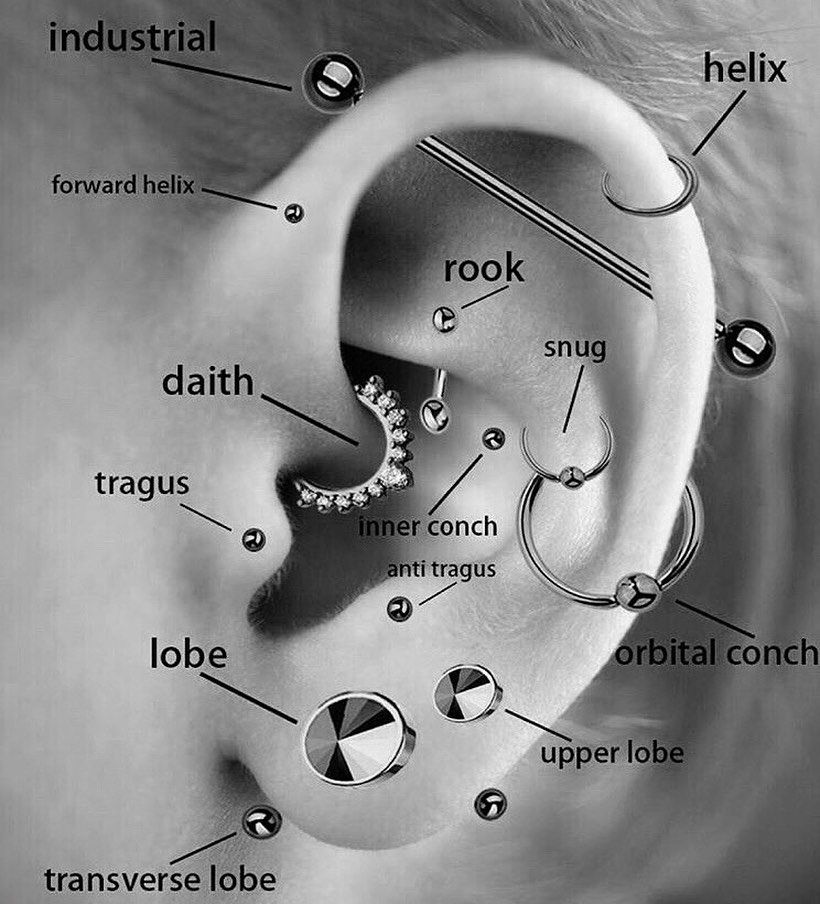Types of Piercings
Ear Piercings
Ear Piercings are placed where they would be most aesthetic for your specific anatomy, and where they will heal the easiest for your anatomy. Your piercer will show you placement before doing the actual piercing to make sure it aligns with your vision.
Ear piercings can be in the lobe, or cartilage. Lobe piercings are easy enough, they go through the bottom, meaty part of your earlobe and they do not go through cartilage. They can be simple, one on each side, or they can be stacked, either to match, or not. Seconds or Thirds refers to the second or third lobe piercing. Every now and then, you can get 4ths, but it depends on your anatomy and the placement of the initial lobe piercings.


Cartilage Piercings
A Cartilage piercing is anything that goes through the cartilage. On the ear, it’s anything that goes through anything but the lobe of the ear. When people mention that they want a cartilage piercing, they usually mean that they want a piercing somewhere along the helix.
There are a lot of cartilage piercings to choose from, these are some of them.
Helix Piercing –
The helix piercing can go anywhere along the outermost ridge of your ear. The area closest to your face is called the forward helix.
Double Helix Piercing –
Double and triple helix piercings are very popular. You can mix and match designs, studs and rings for a desired effect.
Forward Helix Piercing –
This is the cartilage piercing that is closest to your face. Depending on your anatomy you may be able to fit a double or triple helix on the forward helix, so if you’re planning on multiples make sure and let your piercer know.
Snug or Anti-Helix Piercing –
The snug is placed along the anti-helix, which is the ridge in your ear right inside the outer helix ridge. Generally, the snug is placed aesthetically so that it is in the thinnest part of your anti-helix, where it will give a sort of cinched look.
Conch Piercing –
The conch piercing is anywhere on the innermost dip of the ear, right inside the anti-helix. It is usually placed in the most pronounced point of the inside curve so that you can wear a ring with it. When people ask for orbitals, what they usually mean is a conch with a ring instead of a stud.
Daith Piercing –
Daith piercings are the ones that are supposed to help with migraines. While there is no scientific proof that daith piercings help with migraines, there are people that swear by them. Regardless, they are extremely cute.
They are placed on the ridge right behind/above the tragus, the initial piercing is done with a curved barbell, so that once it heals you can switch it to a ring if that is what you desire.
Rook Piercing –
The rook piercing is the ridge right above the daith piercing. It is placed in the center, and generally the thinnest part of the anatomy for quicker healing time.
Tragus Piercing –
The tragus piercing is placed in the center of the notch of the tragus. Like all ear anatomy, the anatomy of the tragus can vary. Many people only have room for one, but I have seen people with enough room for two.
Orbital Piercing –
The only difference from a conch is that it is done with a ring, instead of a stud.
Plate or Flat Piercing –
This is placed in the uppermost part of the ear, where the anti-helix flattens out. It can be placed anywhere. The best placements allow for aesthetics and ease of healing.
Anti-Tragus Piercing –
This is the notch at the beginning ( bottom most part) of the anti-helix. It is directly across from the tragus.
Industrial Piercing –
Is done with a long bar. The placement is very anatomy driven. Your industrial will be placed depending on where the top of your anti-helix is. It is a long bar that connects two piercings, one helix, and one forward helix.
Mouth Piercings
Mouth Piercings can be pretty much anywhere around the mouth. (wip)

